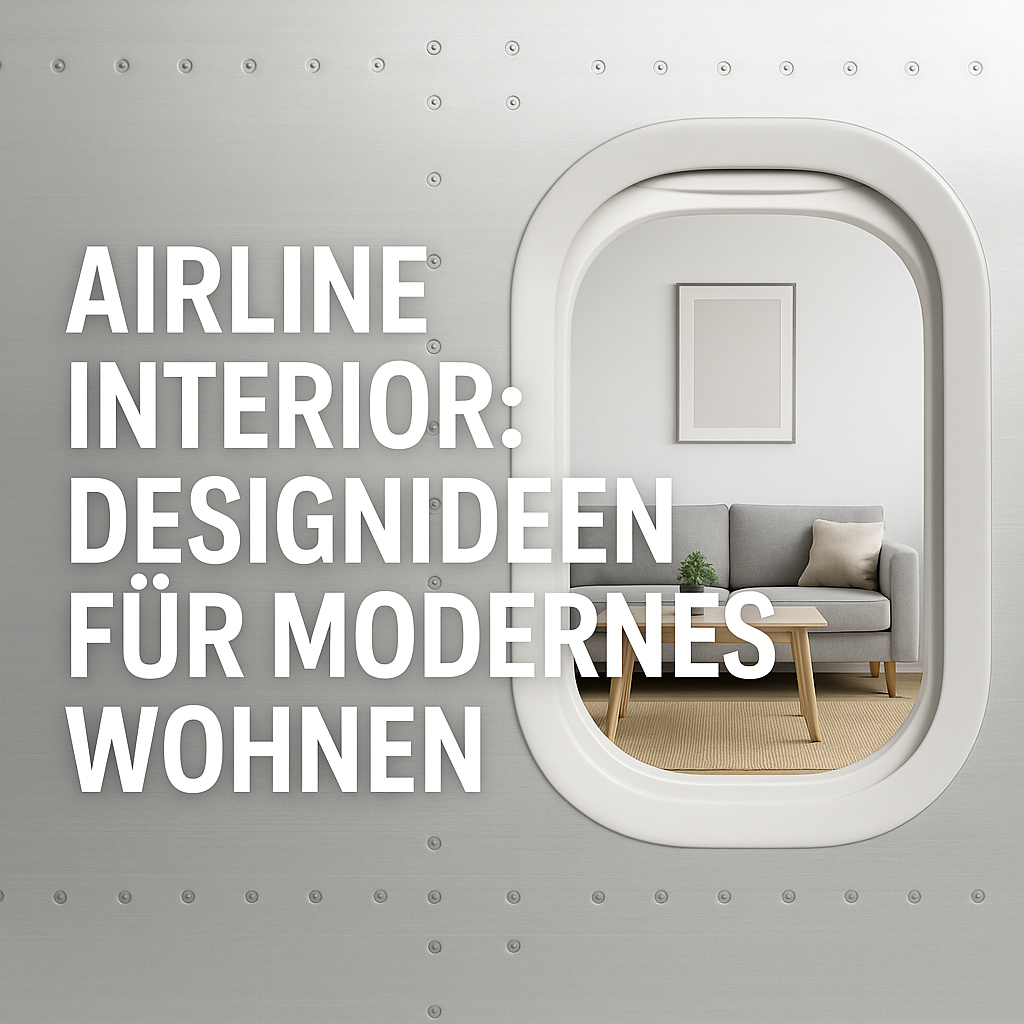Design classics of the skies
Aircraft cabins have been combining functional design with a clean aesthetic for decades. Every row of seats, every piece of onboard furniture, and every detail in an airline interior follows one idea: to utilize limited space efficiently, while providing comfort and creating a specific atmosphere. This principle can also be applied to modern living—especially when it comes to minimalism and modular furnishings. Aviation furniture captures these aspects and brings the style of the skies into private spaces.
Airline interior as a model for minimalism
Anyone entering an aircraft cabin experiences an environment reduced to the essentials. Every component has its place and fulfills a function. This form of minimalism is not only useful for travel, but is also gaining increasing traction in living spaces. Fewer distractions, clean lines, and a well-thought-out interplay of elements make spaces more manageable and have a calming effect. Aviation furniture such as airplane trolleys or onboard boxes are based on this philosophy. They combine storage space and function in a compact form and demonstrate that reduction does not mean renunciation, but rather conscious design.
Modularity as a central concept
Airline interiors are modular in design. Seats, galleys, and overhead compartments are constructed to be interchangeable, expanded, or adapted. This principle is also relevant in modern living, especially in smaller apartments or lofts. Modular furniture allows for flexible room design. An airplane trolley, for example, can be used as a mobile home bar, later as a shelf in the office, or as a storage compartment in the hallway. Onboard boxes are easily transportable and can be used wherever additional storage space is needed. This makes aviation furniture a perfect fit for interiors that are designed to adapt to changing living conditions.
Design ideas from the cabin
The design of aircraft cabins follows not only practical considerations but also aesthetic ones. Materials such as aluminum, stainless steel, and plastics dominate the image, creating a modern, industrial feel. This combination fits with current design ideas in the home, where simple surfaces and clear structures are valued. An airplane window as a wall decoration or as part of a wall bar combines this style with an emotional component: It evokes the view from the window during a flight. This creates furniture pieces that combine function and atmosphere.
Living with a connection to aviation
The transfer of airline interiors to private living spaces is more than a trend. It reflects the desire to utilize design elements with a story, combining functionality and style. Aviation furniture such as airplane trolleys, cabin boxes, or window frames not only create storage space or decoration, but also connect the living space with a passion for aviation.
Conclusion – Inspiration from the cabin
The airline interior demonstrates how minimalism and modularity can be put into practice. Those seeking modern design ideas will find many references for their own living style in the design of aircraft cabins. Aviation furniture allows these principles to be directly applied to everyday life – functional, aesthetic, and with a clear reference to aviation.



